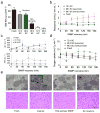Supercooling enables long-term transplantation survival following 4 days of liver preservation
- PMID: 24973919
- PMCID: PMC4141719
- DOI: 10.1038/nm.3588
Supercooling enables long-term transplantation survival following 4 days of liver preservation
Abstract
The realization of long-term human organ preservation will have groundbreaking effects on the current practice of transplantation. Herein we present a new technique based on subzero nonfreezing preservation and extracorporeal machine perfusion that allows transplantation of rat livers preserved for up to four days, thereby tripling the viable preservation duration.
Figures


Comment in
-
Liver transplantation. Out in the cold: new supercooling technique extends liver storage time.Nat Rev Gastroenterol Hepatol. 2014 Sep;11(9):517. doi: 10.1038/nrgastro.2014.125. Epub 2014 Jul 15. Nat Rev Gastroenterol Hepatol. 2014. PMID: 25023030 No abstract available.
-
Organ cooling in liver transplantation and resection: how low should we go?Hepatology. 2015 Jan;61(1):395-9. doi: 10.1002/hep.27590. Epub 2014 Nov 26. Hepatology. 2015. PMID: 25363089 No abstract available.
References
-
- Belzer FO, Southard JH. Principles of solid-organ preservation by cold storage. Transplantation. 1988;45:673–676. - PubMed
-
- Ploeg RJ, et al. Successful 72-hour cold storage kidney preservation with UW solution. Transplantation proceedings. 1988;20:935–938. - PubMed
-
- Hoffmann RM, Southard JH, Lutz M, Mackety A, Belzer FO. Synthetic perfusate for kidney preservation. Its use in 72-hour preservation of dog kidneys. Archives of surgery. 1983;118:919–921. - PubMed
-
- Fahy GM, et al. Cryopreservation of organs by vitrification: perspectives and recent advances. Cryobiology. 2004;48:157–178. - PubMed
-
- Song YC, Khirabadi BS, Lightfoot F, Brockbank KG, Taylor MJ. Vitreous cryopreservation maintains the function of vascular grafts. Nature biotechnology. 2000;18:296–299. - PubMed
Publication types
MeSH terms
Grants and funding
- R00 DK080942/DK/NIDDK NIH HHS/United States
- K99 DK088962/DK/NIDDK NIH HHS/United States
- R01 DK096075/DK/NIDDK NIH HHS/United States
- R00DK088962/DK/NIDDK NIH HHS/United States
- R00DK080942/DK/NIDDK NIH HHS/United States
- F32 DK09555/DK/NIDDK NIH HHS/United States
- R01 DK084053/DK/NIDDK NIH HHS/United States
- R01DK084053/DK/NIDDK NIH HHS/United States
- R01DK096075/DK/NIDDK NIH HHS/United States
- R00 DK088962/DK/NIDDK NIH HHS/United States
- R01EB008678/EB/NIBIB NIH HHS/United States
- P41 EB002503/EB/NIBIB NIH HHS/United States
- R01 EB008678/EB/NIBIB NIH HHS/United States
LinkOut - more resources
Full Text Sources
Other Literature Sources
Medical

